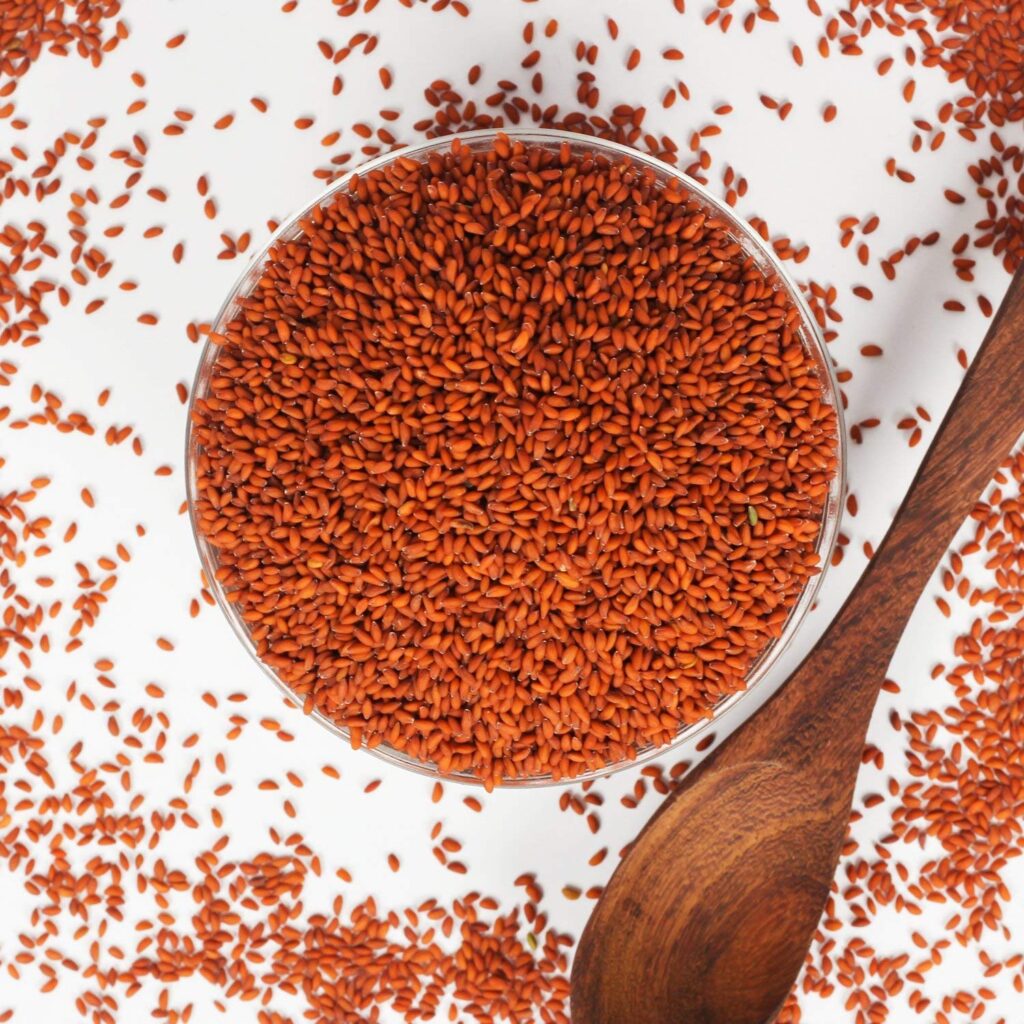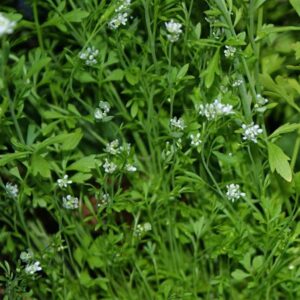Herb
Candrasura (Lepidium sativum) Herb Ayurvedic Overview
Candrasura (Lepidium sativum) is the famous Ayurvedic Herbs consisting of dried seeds of Lepidium sativum Linn. (Fam. Cruciferae), a small erect, annual herb, about 15-45 cm high, cultivated throughout India. It is an annual, fast-growing edible herbaceous plant that belongs to the Brassicaceae family. The plant also has various traditional uses and is the best source of edible oil used for lighting.
The Herb is mainly distributed in Africa (Egypt, Ethiopia and Kenya), Asia (Kuwait, Oman, Saudi Arabia, United Arab Emirates, Yemen, Afghanistan, Iran, Iraq, Palestine, Jordan, Lebanon, Syria, Turkey, Pakistan, China, Japan, India), Europe (Britain, France, Italy, Germany), Australasia (Australia and New Zealand), Northern America (Canada and United States) and Southern America (Argentina and Chile).
The seeds of Candrasura were used as an aperient, diuretic, demulcent, carminative, galatogogue, tonic, emmenagogue, that will help to overcome the symptoms of throat diseases, uterine tumour, nasal polyps and breast cancer. Also, the seeds were supplemented in the diet of lactating women to increase the milk secretion during the postnatal period. The other parts of Lepidium sativum possessed antidiabetic, antioxidant, anticancer, anti-inflammatory, antipyretic, analgesic, cardiovascular properties that provides other health benefits to an individual.
Table of Contents
Scientific Classification of Candrasura (Lepidium sativum):
- Kingdom: Plantae – Plants
- Subkingdom: Tracheobionta – Vascular plants
- Superdivision: Spermatophyta – Seed plants
- Division: Magnoliophyta – Flowering plants
- Class: Magnoliopsida – Dicotyledons
- Subclass: Dilleniidae
- Order: Capparales
- Family: Brassicaceae – Mustard family
- Genus: Lepidium L. – pepperweed
- Species: Lepidium sativum – gardencress pepperweed
Candrasura (Lepidium sativum) Synonyms:
- Sanskrit: Candrika
- Assamese: Halim
- Bengali: Chand Shura, Halim
- English: Common Cress
- Gujrati: Aseriya, Aseliyo
- Hindi: Chansur
- Kannada: Allibija, Kapila
- Kashmiri: Alian
- Malayalam: Asali
- Marathi: Ahaliva, Haliv
- Oriya: Chandasara, Chandasura
- Punjabi: Holon, Taratej
- Tamil: Allivirai
- Telugu: Adityalu, Aadalu
- Urdu: Halim
Candrasura (Lepidium sativum) Description:
a) Macroscopic: The seeds are small, smooth, oval-shaped, pointed, and triangular at one end, having about 2-3 mm long, 1-1.5 mm wide, and are reddish-brown. A furrow is present on both surfaces extending up to two-thirds downward, and a little wing-like extension present on the edges of the seed. When it is soaked in water, the seed coat swells and gets covered with transparent, colorless mucilage, taste, mucilaginous.
The flowers of Lepidium sativum have white or slightly pink petals, measuring about 2 mm. The silquae are elliptical elates from the upper half and glabrous and is measures about 5 to 6 mm. The pods are ovate, roundate, and emarginated. Candrasura fruit is flattened, pale green to yellowish, margins are wing-like, apex emarginated, and is usually 2-seeded. The leaves have long petioles and are lyrate pinnatipartite. The infloroscence of Lepidium sativum is in dense racemes.
Powder: It is Cream-yellow with several reddish-brown fragments of seed coats. It shows pieces of the seed coat under a microscope, some showing red coloring matter, and others with uniformly thick walls, endo sperm oily.
Identity, Purity, and Strength of Candrasura (Lepidium sativum):
- Foreign matter Not more than 2 percent, Appendix 2.2.2.
- Total Ash Not more than 8 percent, Appendix 2.2.3.
- Acid-insoluble ash Not more than 0.5 percent, Appendix 2.2.4.
- Alcohol-soluble extractive Not less than 13 percent, Appendix 2.2.6.
Chemical Constituents of Candrasura (Lepidium sativum):
Lepidium sativum is mainly consists of Alkaloids, essential oil, fixed oil, and mucilage. Other than this, the seeds contained protein (24.2±0.5%), lipids (23.2±0.2%), carbohydrates (30.7±1.2%), fiber (11.9±0.4%), ash (7.1±0.1%), moisture (2.9±0.1%), alkaloids (0.40%), flavonoid 0.42%), saponin (2.8%), tannin (0.61%) and phenol (0.004%).
Ayurvedic Properties and Action of Candrasura (Lepidium sativum):
- Rasa: Katu, Tikta
- Guna: Laghu, Ruksha, Tikshana
- Virya: Ushna
- Vipaka: Katu
- Karma: Balapushtivardhan, Vatahara
Ayurvedic Formulation made by Candrasura (Lepidium sativum):
The important Ayurvedic Frmulation of Candrasura are Kasturyadi Gutika, Chaturbeeja Churna, Vat Vidhwans Rasa, Dhanwanthararishtam.
Therapeutic Uses of Candrasura (Lepidium sativum):
Candrasura is mainly indicated in Hikka, Vataroga, Kaphaj Atisara, Balavardhak, Pushtivardhak, Vatarakta.
Dose of Candrasura (Lepidium sativum):
3-6 gm of the drug in powder form.
Reference:
Ayurvedic Pharmacopeia of India.



